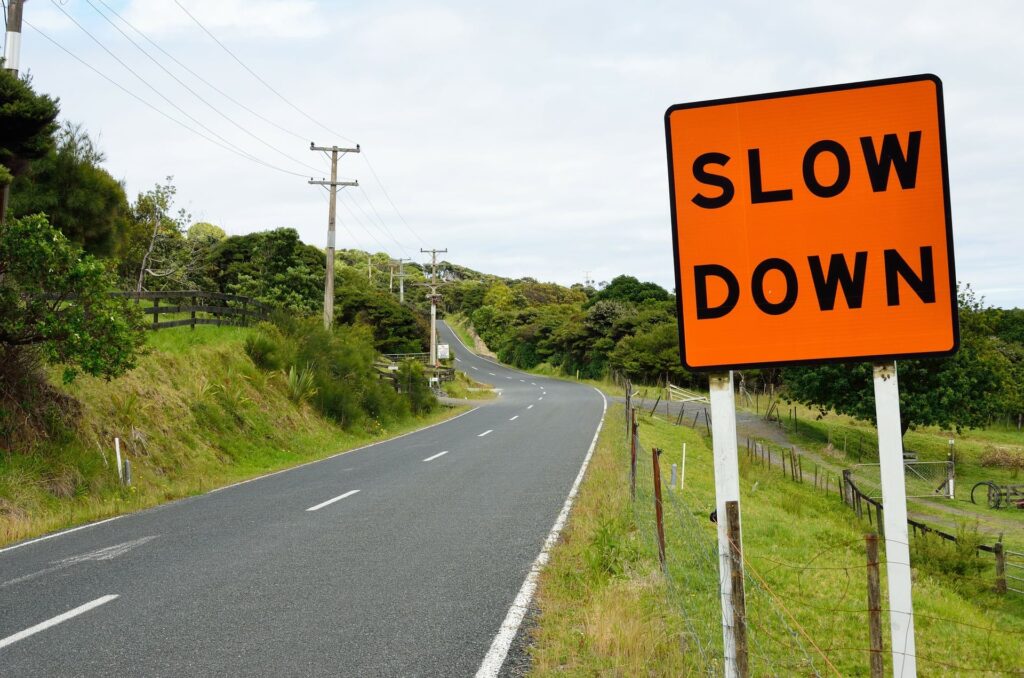How to Make Slow Sparring Work

Maintaining a slow and relaxed pace is difficult for most people when they first approach it. If this is you, you’re not alone. It’s worth it to stick it out and develop your slow training skills. I have coached thousands of students through effective slow drilling and sparring and have had its benefits proven to me over and over again in preparing both high performance competitors and those seeking simply to be broadly healthier and more competent martial artists.
The biggest barriers to effective slow training are:
- Not having the tools to effectively learn to train slow — simply having the intent to go slower does not work.
- Not knowing where to place slow training into overall training — slow training and sparring are on a continuum that includes both high- and low-speed training as well as high- and low-stress training.
- A school culture that overvalues high speed and intensity training over other forms of training. High speed sparring in training has its place, but its payoff-per-minute is significantly lower for most learning than nearly every other type of practice.
I advocate both drilling and sparring at a variety of speeds. In this article I’m going to focus on slow sparring specifically as I find it is one of the hardest and most misunderstood forms of training.
What Is Slow Sparring?
At Academie Duello we drill and spar at 5 different speeds. These range from glacially slow, speed 1, to a non-limited full combat speed, speed 5. Each speed is used for different types of training with slower speeds emphasizing mechanical control, groundedness, and strategic awareness, and higher speeds emphasizing perception, efficiency, and tactical conditioning.
From my Longsword DVD and the Longsword Fundamentals Course on DuelloTV, this video demonstrates the 5 speeds we use:
Slow sparring generally refers to anything between speeds 1 and 3, where you’re going slow enough to overcome your ingrained impulses and bring a higher degree of awareness to your training.
Slow sparring is used in boxing, MMA training, military training, and diverse Eastern martial arts.
Learning to Go Slow
The main challenge with slow sparring is that it is difficult to go slow, especially when you’re new to it. Overcoming this challenge and developing the ability to control and maintain your speed, especially under stress, is in itself one of the most powerful combat tools you can gain from slow practice.
There are three core reasons that people tend to gradually depart from slowness or suddenly speed up:
- Cognitive Dissonance. A student believes their body is in one place and suddenly find out that it is in another. At that moment they try to reconcile being out of position by hurriedly putting their body to where their mind thinks it “should” be.
- Sympathetic Response. A student has a moment of panic and their fight-or-flight response takes over. This commonly occurs when someone suddenly realizes they’re about to be struck or finds themselves in an uncomfortable or unfamiliar situation (such as being strongly controlled, having someone press in, or the onset of grappling).
- Overly Competitive. A student sees an opening to strike or control and they rush to take it. This can sometimes come from being overly competitive or can come simply out of the excitement of realization, much like the sympathetic response.
The important thing to note is that these moments of dissonance, reactivity, and rushing to hit happen in full speed sparring too. They show up as over-wide parries, over-extended attacks, chasing, flailing, and freezing up.
Slow fencing can help you become present to the strategic and mechanical flaws that lead to that rush and help you address them on a fundamental level.
Developing Presence Over Speed
The following process and tips will help you learn how to do slow work well. Through that ability you can then gain a greater presence in your overall learning and fighting.
Familiarize Yourself with the Five Speeds
The five speeds are an important tool for getting in sync with a partner. Spend some time moving up and down the scale of speeds (in solo movement or sparring with appropriate gear) to better understand each speed through contrast. Sometimes in workshops I will have people simply move through the space at each of the speeds going from 1) slow-motion walking, to 2) strolling, 3) purposeful walking, 4) jogging, to 5) running.
Moving between different speeds in a given training program is a powerful tool for developing control and for learning to bring the precision of slow speeds into the intensity of higher speeds. Think of a musician learning to play something slowly and gradually accelerating that pace to challenge their precision while maintaining their rhythm.
Agree on a Speed then Salute Slowly
Before any sparring session agree on a speed with your partner and then use your salute to get into sync.
Stand across from your partner and make your salute at the agreed upon speed. This is an opportunity to match your partner and find an agreement on what speed 3 really means.
Saluting slow is also an ideal way to reset yourself, to bring yourself into the appropriate flow, and even to reset in the middle of a bout. A rule we use in slow sparring at Academie Duello is that if one person steps out and salutes, that their partner will match their salute and sync up speeds with them again. This creates an easy way for either person to reset their partner’s (or their own) speed.
As I move from the salute into guard, I continue in the flow of the speed of the salute. If my partner seems out of sync with me I might halt and make sure that we negotiate our desired speed a little more before we begin.
Inhale and Exhale at Speed
As I lift my sword to salute I inhale, as I lower my sword into guard I exhale. I match my breath with the rhythm of the fighting and continue to follow the relaxed breath throughout the fight. Holding your breath or quickening your breath can be good indicators that you have, or are about to, change speeds.
Breath has extraordinary physiological effects on your body and is both an indicator of sympathetic activation (fight or flight) and a method to engage your parasympathetic system (rest and reflect). Be mindful of it and you’ll find that you can keep a much more relaxed approach to both slow and fast sparring.
Smile
I stole this one from Roland Warzecha of Dimicator, who is also a big proponent of slow sparring as a training tool. Keeping a smile on your face has a chemical effect on your brain and body that reduces stress and helps you keep relaxed. It’s also damn intimidating to an opponent!
Practice with Purpose
Slow sparring is a form of training, not of fighting or competing. It can be tactical, stimulating, and really enjoyable but it is a simulation of slowing time down and needs to be approached as such to be most useful and to avoid some of the pitfalls that can occur.
Once you’re set up right, use these tools to help you both stay slow, reset effectively, and become aware of those moments when you get activated (you feel fight or flight responses, or your competitive ego engage).
Use Speed 1
It can feel frustrating at first, but speed 1 is really easy to find and can have profound physical and mental benefits. If you ask the question “Am I going too fast?”—you are. Speed 1 is essentially as slow as you can go.
Fighting at speed 1 is like having super-perception. You can anticipate and react to your opponent’s movements at the earliest indication. Of course, they can also react to your movements, and from there a very interesting chess match begins. Know that at this speed combat might be long and protracted. It will also be a significant workout as you must sustain extensions and postures for longer periods that you would at high speed. That’s good!
Simulate Physical Forces
Slow sparring loses its benefits if you allow your sword to move in ways that defy physics. Make sure you use your knowledge of full speed sparring to inform what occurs in slow speed sparring. If your opponent strikes your sword with good structure and timing, allow for your sword to be displaced, and use the appropriate technique to recover it, rather than allowing it to become an immovable wall.
Also, recognize that your sword’s movement can only be deviated in very specific ways. Make sure you don’t have it turning any strange corners or zig-zagging its way to your opponent. Stay relaxed and flow with your weapon.
Moving between different speeds in a training session can help bring this awareness of higher speeds to slower speeds and make slower speeds more effective. We often use a one minute timer and in each minute move up and down the speed ladder, for example: speed 1, then 2, then 3, then 4, then 5, then 4, 3, 2, and 1.
Be Curious
Turning on an attitude of curiosity can be a powerful tool for helping you get the most out of slow sparring. Don’t make winning your objective, instead make your objective the asking and answering of questions. You can read more about the process of curiosity in slow fencing in this post.
Choose to Lose
Sometimes competitiveness can get the best of us all. If you feel that for you or your training partner’s desire to “win” is overcoming the desire to stay slow and learn, designate a winner in advance. Here’s how it works:
- Side A is the “designated winner”. You salute and begin your fight at the desired speed.
- Side A and B spar. Speed is maintained. Control is sought, attacks and defenses are made as usual. The only difference is that Side B never lands a successful hit (intentionally).
- Continue until Side A has struck a good blow.
- Switch the “designated winner” to side B.
The designated loser does not simply “fall on their sword”. They can practice and challenge their partner in many ways. They can offer interesting openings and learn about their partner’s reactions. They can explore and experiment in unfamiliar areas with no consequence. If someone says “I’m just too good, I can’t help but hit my partner”, you might open their mind to understanding that an expert martial artist has ultimate control over whether they hit or not. If you lack the ability to control your intent you’re more of a flailing liability than a deadly master.
This exercise can sound a little baffling until you try it out. Once you’re in it though, many find that it gives them a new capability to focus on their training, open their perception, and calm their nervous systems.
Slow Coach
One thing that can make a big difference is having someone on the sideline reminding you to stay slow. Simply having someone periodically calling out “stay slow” or “relax” can help you keep this front of mind. If you’re rotating through a series of partners, this coach role is a good one to have played by the odd one out.
Slow Sparring’s Place in Your Training
Slow sparring can fit into many different places in your training. In any given training session I tend to move through a progression of types of training with the following ratios:
- Drilling (30%) – Learning and refining techniques in a focused fashion.
- Tactical Conditioning (30%) – Expanding the options and antagonism in given drills. Increasing the speed while maintaining control.
- Slow Directed Sparring (30%) – Sparring slow with an emphasis on the target skills.
- Fast Scenarios or Sparring (10%) – Sparring or tactical drilling at higher intensity to build perception and observe areas to target in future sessions.
Note that you need to target your ratios and types of training to your goals. If you want to focus on strength, coordination, and flow you might not do any fast training. If you just want to mix it up with friends and aren’t really targeting sustained improvement do a ton of fast sparring, it’s a blast.
Why Spar Slow
Using slow sparring for the wrong reasons or trying to get the wrong things out of this mode of training is a recipe for frustration. There are certain things you have to simulate and certain techniques done slowly that don’t make sense, but that is true in any drill or focused training activity.
These are the types of focus and areas of benefit you should aim at in your slow sparring:
Precision & Mechanics
When you go slower you can devote more of your attention to staying connected to the ground, moving with purpose and in a correct manner, and it’s a ton more work for your stabilizer muscles (in a good way!). Slow Tai Chi developed as a training method for a martial art that was traditionally done at high speeds. Going slow requires a much greater sense of balance, Tai Chi practitioners develop slow movement to require development of stability and to reveal flaws in form.
Relaxed Presence
Adrenalin can be a useful tool in some conflict situations and it is important to learn how to work with it, but for many an ideal martial mindset is one that is relaxed, focused, and ready; not frenetic and kinetic. Slow fencing, particularly when combined with training where you gradually accelerate in speed or move between fast and slow practice, can be an effective method for developing this calm.
Replacing Panic with Plans
As mentioned above, slow sparring makes moments of panic and cognitive dissonance clearer an easier to investigate and train through. Be curious about these moments and their connection to your responses when you’re fighting at higher speeds. When you identify them, use your time in slow sparring to purposefully move toward these places.
When you understand why you’re suddenly accelerating you can specifically target the trigger area. Perhaps there’s a new skill or response you need to learn. Maybe you need to spend more time in that zone simply to learn to relax and keep your perception open. Slow sparring makes these errors more apparent and helps you develop appropriate responses that, with continued practice, will become part of your full speed responses as well.
Develop Tactical Awareness
Working at slower speeds reduces the amount of data that you have to process all at once and thus can help you develop tactical perception and decision making skills. At slow speeds you can effectively ask tactical questions: “When I do X, how do they respond? How do I counter that?” From these questions you can begin to build the framework for strategic decision making and learning how to effectively put techniques from class into context. Being overly ponderous is detrimental at high speeds, so we use slow sparring to make space for the mental process.
Reduce Risk
Slow sparring is a great way to participate in the contexts and dynamic of a combative martial art, in proper distance, with proper intent, while minimizing the risk of injury (without wearing armour). This opens up the accessibility of the art, reduces equipment requirements, and allows for safe participation for those who may not embrace the risks that come with full speed and full contact sparring. (I would still recommend a mask and gorget even at the slowest speeds.)
Meditative, Fun, and Flow
Besides all these training uses and benefits, slow fencing can be meditative, relaxing, and enjoyable. For me what started as a training tool soon became an enjoyable end in and of itself. I love the flow, the heightened awareness, the connection with my body, and the capacity to have an enjoyable time with students of all experience levels. It can often take the competitiveness out of a sparring encounter as well and leave more room for exploring and enjoying the art with a partner.
How to do Good Slow Sparring
Like all training tools, you need to devote some time to learning how to use the tool itself before you can start to use that tool to improve your martial art. The beautiful thing with slow sparring is that to get good at it you need to develop mechanical control, perceptive control, and physiological control — all of these are combat skills that will improve your martial art on their own before you even target slow sparring at something else.
Making Slow Sparring Part of Your School Culture
Here are a few tips for introducing slow sparring into your school or group (or re-introducing it):
- Start with the goal of exploring slow sparring as a tool. Either invite your group to move into a space of (radical?) experimentation, or create a special time for working with people who want to try it out. Forcing people into a mode of training against their will never have good results.
- Make a dedicated training session or workshop whose goal is to practice and implement the tools of slow sparring I shared above. I dedicate 90 minutes to 2 hours when I’m introducing slow sparring for the first time.
- Add a slow sparring practice to your existing session as part of a 20 minute warm-up, or as a transition between drills and slow sparring.
- Give it a purpose. Make sure always to set the intent of slow sparring to help people calibrate appropriately to its goals and not try to get the wrong thing out of it.
- Treat sparring at all speeds as valuable. In our school to progress between ranks you need to get a minimum of “sparring sessions” signed off by training partners. These sessions can happen at any speed. All training can be effective, fun, and valuable. Slow sparring is certainly different than fast sparring, but fast sparring is also different than a street fight. Recognize that no one simulation is more “true” than another.
I hope that this deep dive into slow sparring has been valuable and that you’re inspired to expand the way that you train. Feel free to share this article with others and reach out with any questions you might have or strategies that you find useful.
May slow sparring be another one of your tools on the path to mastery.



